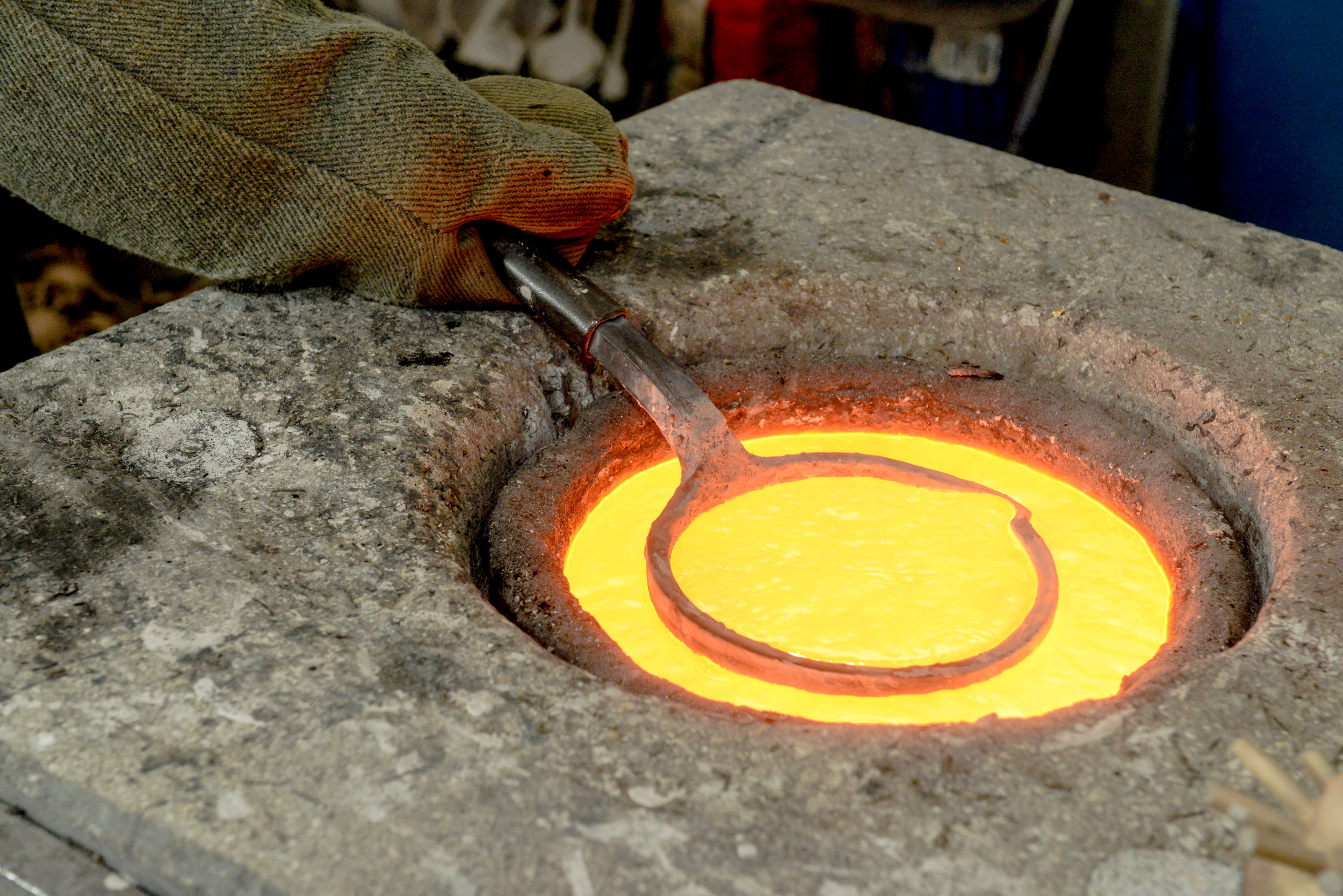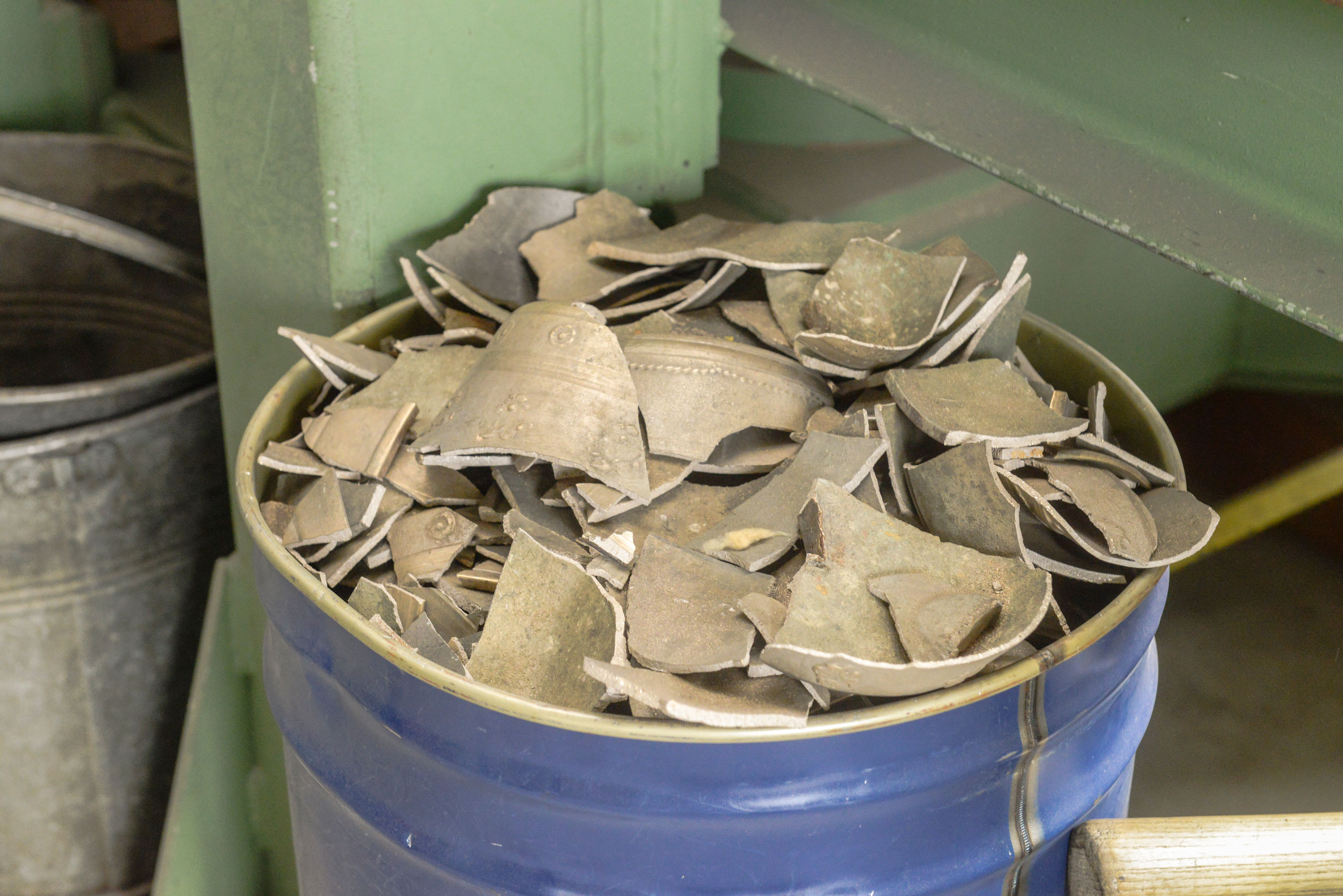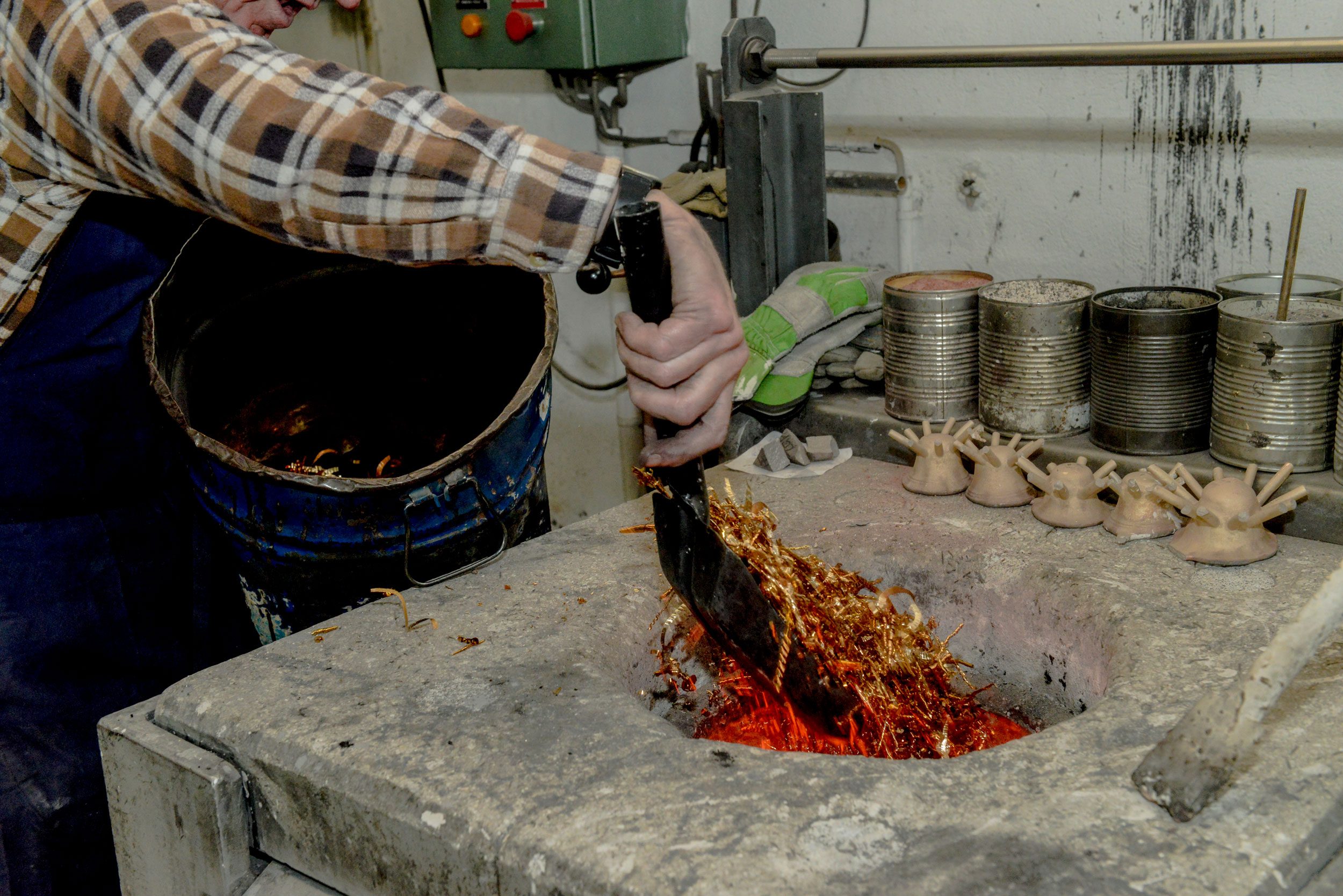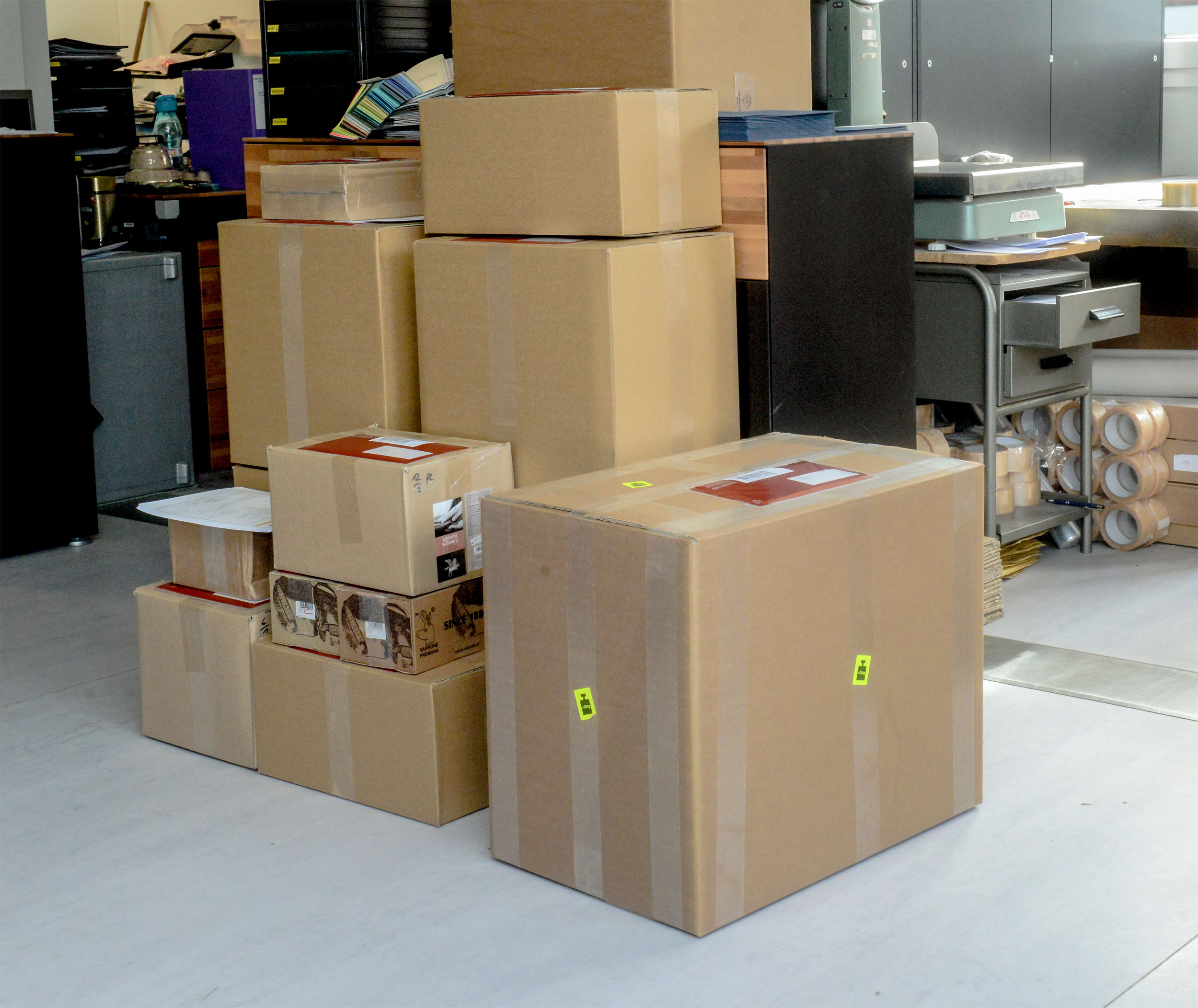Environmental protection in the Bell Foundry Berger
Electric instead of oil
An electric induction melting furnace and natural gas have been used to melt the bronze since 1992. The existing oil smelting furnace from the old days is only kept in good condition for emergencies and is appropriately serviced. In order to further minimize the energy consumption, the bronze required for the casting is precisely calculated and several melting processes are started as often as possible with the furnace while it is still warm in order to keep the required heating energy as low as possible.
The right bronze alloy
The metal alloy used consists of 100% new metal. This is also done primarily for environmental reasons, because it is impossible to determine what exactly is in the scrap metal. In addition to lead, scrap can also contain arsenic or other toxic substances that are harmful to humans and animals. The formation of slag in scrap metal can also be enormous, which in turn has to be disposed of separately. In short: Scrap metal that is not professionally processed leads to products of inferior quality. Holes or even the irretrievable loss of sound are unfortunately not uncommon with inferior materials.
Old bells are also shredded and sent to the recycling professional. And who knows? After the preparation, new cowbells might be created again?
It goes without saying that the use of resources is a constant issue at the Berger bell foundry. Air pipes, sprues, shavings and bronze, which was sprayed out of the ladle during the pouring process, are swept up and melted down again. The origin of these materials is traceable and the bronze can therefore be melted down and cast again without hesitation.
The exact composition is a well-kept family secret and is made according to grandfather’s recipe. Only this much can be revealed: The alloy consists of approx. 80% copper and 20% tin.
The molding sand – a natural product
The molding sand is also recycled after casting. The molding sand gets its black color from the high temperatures it is exposed to during casting. In each case a small part burns and only this small part is replaced by new sand. The sand is a natural sand and not a synthetic product. The exact composition is of course a small family secret and has been passed down orally for many generations. Because only with perfect sand, the unique Berger bells with the well-known fine surface succeed.
The bell belt leather – High quality, sustainable
The leather of the bell straps is largely made from vegetable-tanned leather. Here, too, no toxic substances are used in order to guarantee the sustainability of a real Swiss cowbell.
Badger hair, i.e. fur, is completely avoided at the Berger bell foundry. The methods of catching the animals for the badger skins in certain countries for bell straps are unfortunately more than questionable and z. Sometimes extremely brutal (including slings). Breed fur animals from these countries are usually kept under poor conditions and are also killed.
For this reason, the Berger bell foundry does without borders with wild animal skins. These methods of obtaining fur cannot be supported for ethnic and moral reasons.
Shipping to your doorstep
Of course, it’s not just production that is geared towards sustainability. The shipping has been climate-neutral since 2012 and the packaging consists of recycled cardboard and paper, which can easily be disposed of in the waste collection. International parcels are also sent 100% climate-neutral.
Repair instead of throwing away
Is your bell cracked? Has a crack? Bring them over to have the bell properly repaired. The bell foundry Berger is not a fan of the throwaway society as long as something can be repaired. Sustainability is important, especially with a view to the future.




